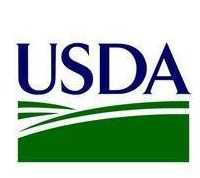U.S. Department of Education Announces Green Ribbon Program to Advance Sustainable Schools
Campaign for Environmental Literacy, Earth Day Network, National Wildlife Federation and the U.S. Green Building Council Laud Administration’s Efforts to Green Our Nation’s Schools
Washington, DC – April 26, 2011 – (RealEstateRama) — The U.S. Department of Education announced today the creation of the Green Ribbon Schools program, which will recognize schools that have taken great strides in greening their curricula, buildings, school grounds and overall building operations. The program, celebrated during a tree planting ceremony at the Department of Education headquarters, will help cash-strapped schools save money and prepare students for 21st Century jobs.
The Green Ribbon School awards will be given to schools that best exemplify America’s transition to a sustainable economy, from graduating environmentally literate students to effectively managing their carbon footprint.
As budget crunches hit school systems across the nation, the Department of Education is providing an innovative solution through the Green Ribbon Schools program to encourage school systems to take a comprehensive approach to becoming a green school by cutting expenses through energy efficiency and green building measures, while at the same time using these sustainable school improvements as part of their efforts to educate students about science, technology and the environment.
“In a time when budgets are tight, the Department of Education is encouraging schools to engage in a creative win-win scenario – cutting expenses while using the school facilities as dynamic learning labs for students,” said Larry Schweiger, president and CEO of the National Wildlife Federation. “This federal initiative supports the work of the National Wildlife Federation, which has helped more than 4,000 schools go green over the last 15 years.”
The U.S. Department of Energy estimates that smarter energy management in schools, which spent between $6-8 billion in 2000 on energy, could reduce energy consumption by as much as 25 percent and cut school energy costs nationally by more than $1 billion annually.
Jim Elder, Director of the Campaign for Environmental Literacy, said “Today’s event marks a significant milestone in the green school movement. Green Ribbon is more than just another award program. It puts the weight of the U.S. Department of Education behind a comprehensive vision for green schools, and with a strong push from everyone involved, will significantly accelerate the adoption rate of green school practices among schools across the country. It sets a very high bar for schools to aim for, while definitively answering the question: what exactly is a green school?”
“No other building type speaks more profoundly to the benefits of green building than the places where our children learn. Green schools reduce energy consumption, save money and foster healthier learning environments for our children,” said Rick Fedrizzi, president, CEO and founding chair, U. S. Green Building Council. “The Department of Education’s Green Ribbon Schools program is a landmark in progress toward green schools for everyone within this generation, which is the vision for USGBC’s Center for Green Schools.”
“The Green Ribbon Schools program represents an incredible milestone for the health and sustainability of our nation’s schools, and we applaud the Department of Education’s visionary leadership in building one of the foundations of the green economy,” said Sean S. Miller, Education Director at Earth Day Network. “We look forward to the announcement of the first winners of the Green Ribbon Schools program on Earth Day 2012.”
According to 75 national and state organizations that supported the push for the initiative, many states have already established either green school programs or environmental literacy plans. The Green Ribbon program will unify and acknowledge such efforts under a voluntary national award intended to stress innovation and new strategies in environmental curriculum development, teachertraining, facilities management, operations and community engagement, with criteria developed by the Department of Education.
“Environmental literacy is an important part of a well-rounded, world-class education,” Education Secretary Arne Duncan said. “Through the Green Ribbon Schools program, we’ll be holding up schools that are leading the way in teaching science and in ways that show students the importance of developing clean energy sources and sustainable solutions for the environment.”
The effort to get the Green Ribbon program adopted by the Department was conceived and coordinated by the Campaign for Environmental Literacy (CEL), and the Green Ribbon campaign’s steering committee – CEL, Earth Day Network, the National Wildlife Federation and the U.S. Green Building Council – worked for over a year to make this happen.
Launched at the behest of teachers, principals, students and others supporters across the country, the program is to be modeled on the nearly 30-year-old Blue Ribbon Schools program, which recognizes schools whose student bodies have displayed high academic achievement or improvement.
Contacts:
Mary Burnette, National Wildlife Federation, 703-438-6097
James Elder, Campaign for Environmental Literacy, 978-526-7768
Sean Miller, Earth Day Network, 202-425-2836
Marisa Long, U.S. Green Building Council, 202-552-1500
About Campaign for Environmental Literacy
The Campaign for Environmental Literacy (CEL) is a network of national education and environmental organizations that work to engage the federal government in helping to close the nation’s growing environmental literacy gap. CEL has led successful efforts with its lead partners (National Wildlife Federation, Second Nature, Earth Day Network, and U.S. Green Building Council) to restore and grow environmental education funding; authorize the University Sustainability Program at the Department of Education; and introduce the Ocean, Coastal, and Watershed Education Act and the No Child Left Inside Act (www.fundee.org).
About Earth Day Network
Growing out of the first Earth Day in 1970, Earth Day Network mobilizes over one billion people worldwide year-round with over 25,000 partners in 192 countries to broaden, diversify and mobilize the environmental movement, through advocacy, education, public policy and consumer campaigns. More than one billion people now participate in Earth Day activities each year, making it the largest civic observance in the world (www.earthday.org).
About National Wildlife Federation
The National Wildlife Federation (NWF) is America’s largest conservation organization, inspiring Americans to protect wildlife for our children’s future (www.nwf.org). Over the past 15 years, NWF education programs have helped over 4,000 schools to become greener through NWF’s Certified Schoolyard Habitats program and Eco-Schools USA. NWF is the sole U.S. host for the international Eco-Schools program, the largest green school program globally, that is now in 51 nations, reaching 38,000 K-12 schools and over 11 million students. NWF’s Eco-Schools USA program launched in November 2009 and is one of America’s largest green school programs, currently reaching over 480 schools in 42 states, in an effort to green school buildings, grounds, curricula, and student experiences (www.ecoschoolsusa.org).
About the U.S. Green Building Council
The Washington, D.C.-based U.S. Green Building Council is committed to a prosperous and sustainable future for our nation through cost-efficient and energy-saving green buildings. With a community comprised of 79 local affiliates, 16,000 member companies and organizations, and more than 155,000 LEED Professional Credential holders, USGBC is the driving force of an industry that is projected to contribute $554 billion to the U.S. gross domestic product from 2009- 2013 (www.usgbc.org). The Center for Green Schools at USGBC was founded with the vision that every student will attend a green school within this generation. The Center provides the resources and support to elevate dialogue, accelerate policy and institute innovation toward green schools and campuses. Thanks in part to generous support from founding sponsor United Technologies Corporation (www.utc.com), the Center works directly with staff, teachers, faculty, students, administrators, elected officials and communities to drive the transformation of all schools into sustainable places to live and learn, work and play (www.centerforgreenschools.org).














